|
Swallow "Doretti" sports cars were
built in the 1950s at Walsall Airport by the Swallow Coachbuilding Company (1935) Limited, part of the Helliwell Group. The story however begins in the early
1920s in Blackpool.
Background
It all began when Bill Lyons met William Walmsley
who had just moved to Blackpool from Stockport. They both lived
in King Edward Avenue, Blackpool and were interested in
motorcycles. Bill Lyons was a motorcycle enthusiast, and
William Walmsley built sidecars in his parents’ garage,
and attached them to reconditioned motorcycles. Bill met
William when he purchased a sidecar for his own
motorcycle. He persuaded him to expand the business with
himself as a partner.
On 4th September, 1922
they formed the Swallow Sidecar Company, funded by
financial backing from both their families and a bank
overdraft. They began to produce sidecars in a 2 storey
building in Bloomfield Road, with 8 employees. Space
soon became a problem and two other factory buildings
were acquired, one in Woodfield Road, and another in
John Street.
They decided to extend their
product range to include car bodies, which meant that a
much larger factory was essential. As luck would have
it, a modern purpose-built coachbuilding factory was up
for sale at 41 Cocker Street. Walmsley’s father had just
sold his coal business and so decided to invest the
proceeds in the building, which he purchased, and rented
to Swallow for £325 a year. Late in 1926 the company
vacated their other premises and moved into the
building, which was ideal for their purpose. In 1927 the
company name was changed to The Swallow Sidecar and
Coach Building Company.
One of Swallow’s suppliers was
A.J.S. of Wolverhampton. A.J.S. built sidecars at Lower
Walsall Street Works and sold them under the C. W.
Hayward name, later changed to “Graiseley” sidecars.
Swallow was one of the company’s best sidecar customers.
|
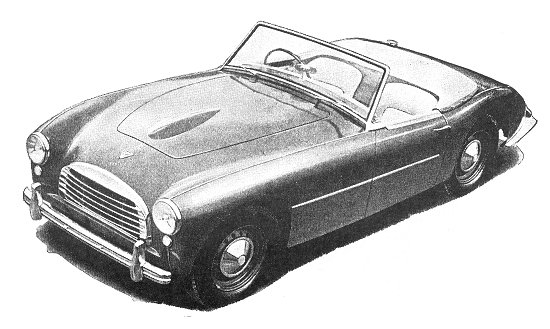 |
A Swallow "Doretti".
Courtesy of the late Jim Boulton. |
|
Swallow began to purchase new
Austin Seven chassis from a dealer in Bolton and fit
them with a luxurious, stylish, 2-seater, open tourer
body, made of aluminium on a wooden frame. The car,
which made its first appearance in May 1927 was called
the Austin Seven Swallow and sold for £175. It was
popular, and in 1928 a 4-seater saloon was launched,
along with the Morris Cowley Swallow. They soon received
an order for 50 Austin Seven Swallows from
P. J. Evans of Birmingham, and before
the year was out, received an order for 500 from Henly's
in London.
From
Blackpool to Coventry
In Blackpool they could only
produce two a day, and there was a shortage of skilled
labour, making it difficult to expand. They decided to
move to an old 40,000sqft. ammunition factory at
Foleshill in Coventry, where there was plenty of space,
a large skilled workforce on the doorstep, and in close
proximity to their suppliers, which would reduce
transport costs. The move was made late in 1928 and
production increased to around 50 cars a week. Although
the company still made sidecars, the name was changed
yet again, to the Swallow Coachbuilding Company.
The following year the company
extended the product range and began to build car bodies
on Standard, Swift and Fiat chassis. The new models were
launched at the 1929 Motor Show, including the Standard
Swallow, a large saloon that sold for £245. By 1931 they
also produced their own version of the Wolseley Hornet,
and the Hornet Special.
Bill Lyons’ ambition was to become
a car manufacturer, producing complete cars. He began by
arranging for the Standard Motor Company to produce a
chassis to Swallow’s design, that was fitted with a
Standard Engine. This formed the basis of the successful
S.S.1 Coupé which sold for £310. Other models soon
appeared including the S.S.1 Tourer. Bill wanted the company to go
public, but William Walmsley would have none of it. As a
result he decided to let Bill Lyons buy him out, leaving
Lyons in sole charge. By the end of 1934 1,800 cars a year
were leaving the factory.
In 1935 Bill Lyons founded S.S.
Cars Limited. He put the
Swallow Coachbuilding Company into voluntary
liquidation, and founded the Swallow Coachbuilding
Company (1935) Limited. S.S. Cars Limited concentrated
on manufacturing cars and later became Jaguar. The
Swallow Coachbuilding Company (1935) Limited continued
to make sidecars, and was sold to the Helliwell Group
when Jaguar was formed in 1945. |
| Angela and Trevor
Davies in their immaculate "Doretti".
At the 2008 Festival of Black
Country Vehicles, at the Black Country Living Museum,
Dudley. |
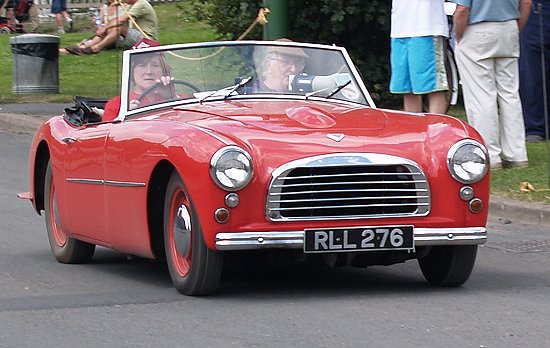 |
|
From
Coventry to Walsall
As a result of the sale, the manufacture of
Swallow sidecars transferred to Helliwell’s factory at
Walsall Airport, where the company manufactured aircraft
components. In 1946 Swallow produced the successful
"Gadabout" scooter, designed by Frank Rainbow, and in
1950 the Helliwell Group was acquired by the Tube
Investments Group.
In the early 1950s thoughts turned
to manufacturing a sports car, mainly for the American
Market. Early in 1953 Swallow’s brilliant designer Frank
Rainbow was given the task of designing the car, on the
understanding that the first production model had to
leave the factory within 9 months. He quickly got down
to work on the project and the first car arrived in
Southern California in September of that year. |
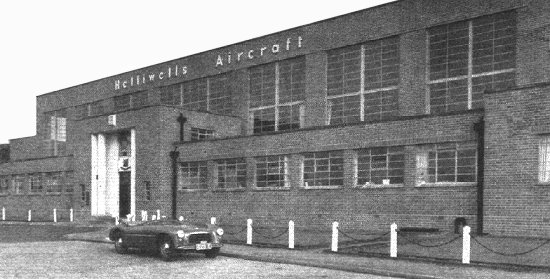 |
A "Doretti" outside Helliwell's factory at Walsall Airport.
From 'Flight' magazine, January
1954. |
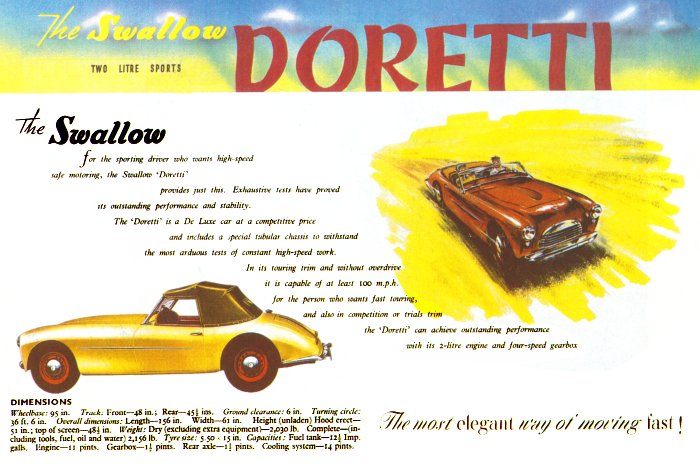
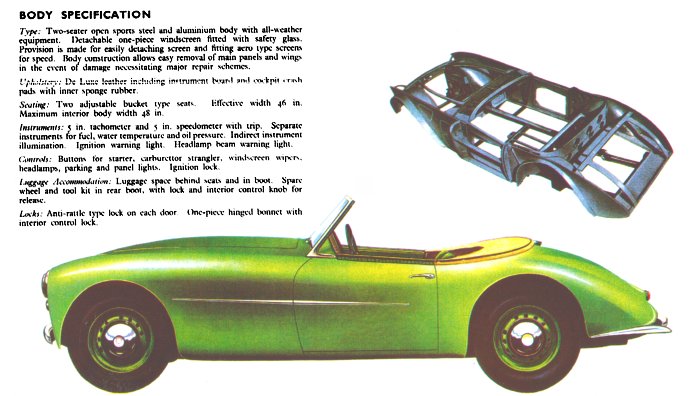
|
The 2-seater car is based on the
Triumph TR2. Standard Triumph agreed to supply TR2
engines, gearboxes, axles, and suspension units. The
bodies were made by Panelcraft Limited, Woodgate,
Birmingham. The car has a tubular steel chassis, a
2-litre engine, and a double skinned body with a steel
inner shell, and alloy outer shell.
The car is called the "Doretti", an
Italianised version of Dorothy, named after Dorothy Deen,
the daughter, and business partner of Arthur
Anderson, the importer and distributor for Swallow and
Triumph in Southern California.
Although in competition with the
TR2 the "Doretti" was more expensive, selling for £1,102
compared with £910 for a TR2. It was also heavier and so
had a poorer performance, and less room for driver and
passenger alike. Production lasted until 1955 during
which time around 275 were built. The chassis
numbers start at 1,000 and end at 1,274. |
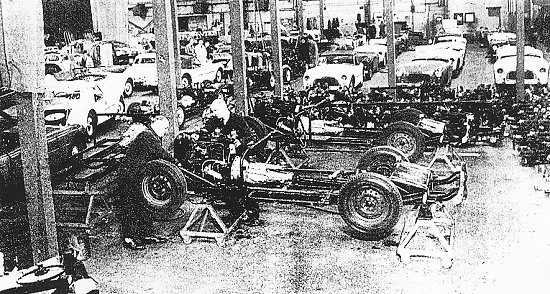
Production at Walsall. From a newspaper
cutting, newspaper unknown.
| Another view of Angela and
Trevor Davies in their "Doretti".
At the 2008 Festival of Black
Country Vehicles, at the Black Country Living Museum,
Dudley.
|
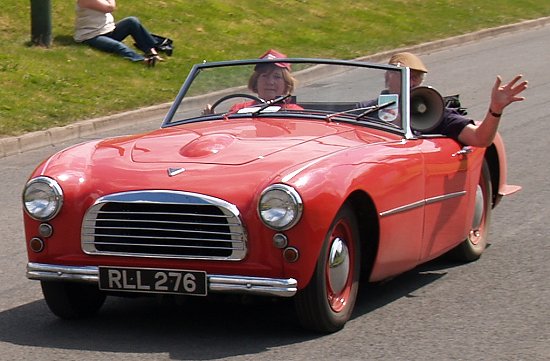 |
|
Unfortunately Sir John Black,
Chairman of the Standard Triumph Motor Company was badly
injured in an accident, while driving a "Doretti".
Because of this the car became unpopular at his company.
Production ended prematurely
because of a management decision taken at Tube
Investments, the parent company. Plans had been made to
release a new model the Swallow "Sabre", but sadly this
had to be abandoned.
In 1956 the Swallow Coachbuilding
Company (1935) Limited was sold to sidecar manufacturer
Watsonian.
Unlike many cars, the Swallow "Doretti" has been very
successful in preservation. Out of the 275 built, 184
are known to exist, 66 of them in the UK.
|
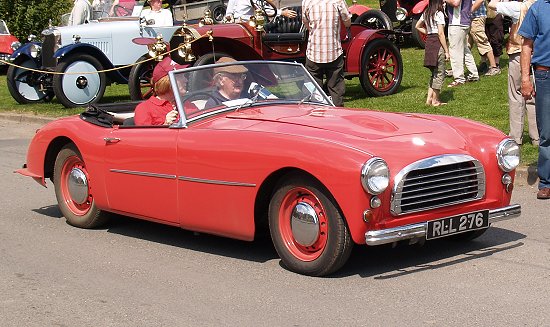 |
A final view of Angela and
Trevor Davies in their "Doretti".
At the 2008 Festival of Black
Country Vehicles, at the Black Country Living Museum,
Dudley.
|
| A final view of the Davies's "Doretti".
At the 2006 Black Country
Vehicle Rally, Black Country Living Museum, Dudley. |
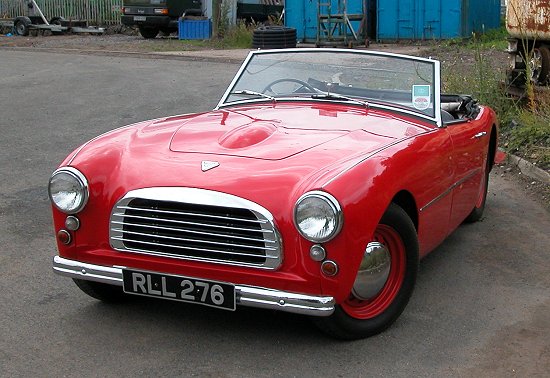 |
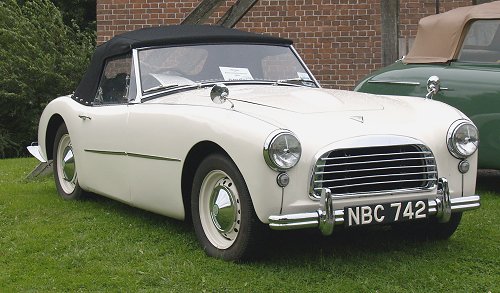 |
Peter Loxley's "Doretti".
As seen at the 2009 Festival of
Black Country Vehicles at the Black Country Living
Museum. |
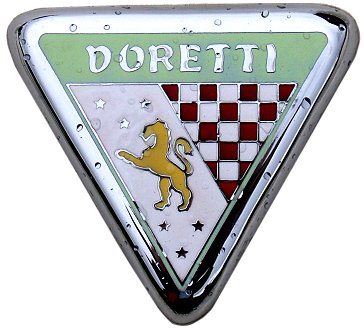
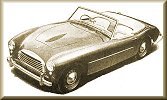 |
Return to
the
previous page |
|